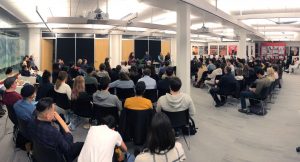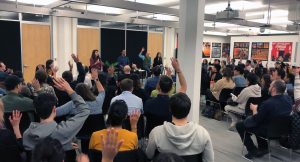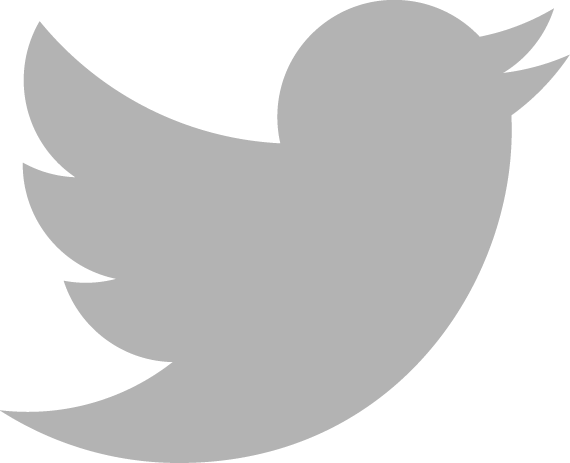How to get noticed, what to avoid in your portfolio and how to make sure your first months in a new job go smoothly

Landing your first design role in the tech industry is tough. AIGA and Wunderdogs have joined forces to bring designers the best advice and strategies for approaching their next move. Our panel of star design managers from LiveRamp (Hans-Frederick Brown), AE Studio (Amélie Beurrier) and App Annie (Amitabh Handa) shared their tips and tricks for job seekers in tech. We’ve captured the key insights for those who missed out on the fun:
Outreach
Be direct and ask for introductions
Being direct is an important skill when looking for a job in the crowded tech space. Amitabh recalled a candidate that reached out to him recently looking for introductions: “She reached out to me with a resume and a cover letter — it was the perfect executive summary, constructive and a very easy-to-read pitch of herself. Her cover letter included some high stats about her accomplishments, KPI’s and awards. She also included a list of thirty companies she was asking me to introduce her to — and she classified them by size, from startups to corporations. She did her homework — so I introduced her to 5 people right away.”
Asking for introductions is always a good idea. If an interview doesn’t work out consider asking the hiring manager for introductions to companies that may be a better fit — in the age of networking introductions have two-way benefits.
Portfolio
Showcase the impact
One of the most overlooked yet crucial components of your portfolio is an indication of the impact of your work. As Amelie mentioned, “Product managers would put lots of numbers in their resumes, alongside the description of their impact. But if as a designer you are able to claim some part of that impact and openly say “this is where my product was — and this is where it is now”, and tell how the user experience has improved in terms of metrics, that will be a big win for me as a recruiter”.
Don’t overcrowd your portfolio with cases
A big newbie mistake is showing too many work examples. A portfolio review typically lasts 45 minutes to an hour. You want to keep time for questions after your presentation so sharing 2 to 3 projects is usually best. Hanz added that “…if you are in a good relationship with the hiring manager, ask them for a quick review before you go onsite so you can align with the types of projects the team are looking for. The rule of thumb is to start with 4-5 projects in your portfolio – show them to your hiring manager and pin down the 2 or 3 that have the greatest impact. Hiring managers are not looking for slideshows.”
Be concise When it comes to case studies lean into the journey not the destination, and be concise. “I’ve interviewed over a 100 people in the past year, — says Amitabh — I do not have time to read a long case study. It might be a really important project to you, something you’ve dedicated 6 to 8 months of your life to, but I do not have an hour to read a case study. 5 minutes should be enough – and this forces you to be concise. The same is true for the first impression of a resume or portfolio – I’d like to see an executive summary of who you are and what you are looking for. Next, I’d be interested in your skills – don’t show the software you know, as those are transferable skills – we are not looking for a tool user. We are looking to hire somebody who solves problems.”
If you’re a newbie, create your own cases
If you don’t have much experience you still have the tools to create an appealing portfolio. First, you can redesign an existing product: “Here’s what I tried to fix; Here are my goals and recommendations; I tested it with friends, and here’s the feedback” — showcase how you work through all these steps. Or, do a real project for an NGO that can’t afford a designer – you’ll be able to combine a positive impact cause with building your portfolio.

Skills to help you succeed at your job
On empathy
Design roles are inherently empathetic. One of the main ways to judge if you’re a good fit is how well integrated into the organization you are after a few months. Designers have strong connections with multiple teams — engineers, managers, marketers, sales — you need to be able to quickly establish trust with everyone. When someone’s let go it’s often not due to skills, it’s because they were not capable of creating trust and others stopped listening to them. Designers have to influence — they are the force that pushes the product (or brand) forward.
On being a self-starter
Being a self-starter is another important skill for designers to possess — they should not need their handheld much. There is no expectation to deliver amazing design in your first few months: but you can gauge cultural fit, team bonds and how well you’re able to work without much direction. A good rule is to ask your manager about their expectations – in young tech co’s things change rapidly and you want to be able to adapt to changes and manage new expectations. The ability to identify work blockers and remove them yourself is vital: as a designer you will constantly have to manage yourself.
Working in B2B vs B2C
B2C
Working with B2B or B2C is a matter of personal preference. B2C has way more focus on UI and unlike B2B, your users can be anywhere (so it is easier to test and connect with your audience). A lot of focus will be on the organization’s brand. B2C is great for those who want to say “I have a million users using my product” — something large and prominent, but it is often less challenging than B2B.
B2B
The main difference with B2B is 99% of the time users are buying your product to get a job done. It’s not about how many followers you have — it’s about instantly solving a problem with your software. The huge emphasis on efficiency is very specific to the enterprise world. In the B2B space there are also more constraints — you have to negotiate with engineers on different levels because change, no matter how small, is complex.
In B2B companies project managers often consider themselves expert users of the product, this can mean they expect everyone to have the same level of technical understanding as them. With this is mind it is vital to support your design iterations with research that demonstrates the benefit of the updates to the customer, benefits the project managers may not have initially appreciated themselves.
In terms of UX and user research B2B can also be more challenging due to the multiple professional users, but it is highly interesting and you are given the opportunity to build a complex product.
Early design hire for tech startups
Junior designers shouldn’t be the first design hires
If you’re a junior designer and a startup is hiring you as their first and only designer, that’s a red flag. It is likely you won’t receive the support you need to succeed.
If you are a startup considering hiring a junior designer as your only creative, don’t. There is a huge risk you will not be able to provide the guidance they require and it is likely you’ll need to re-do their work at some point in the not too distant future – which will not be cheap.
If you can only hire one designer look for an experienced professional who can make good and tough decisions rather than someone experiencing everything for the first time.
Design team vs Jack of all trades
When looking for their first designer many small teams search for a full stack designer or a Jack of all trades — this is often not a good idea. It is better to find somebody great at the one thing you predominantly need help with. Ask yourself: what is this person going to be spending over 50% of their time doing?
Your first hire should be experienced: a system designer capable of creating your end-to-end design system (interactions at all customer touch points). Then, if further resources are available expand your team by hiring specialized designers. Designers onboarded to solve a specific business problem. Repeat this process until your team consists of multiple subject matter experts capable of solving niche problems whilst working into the same system.
Thank you to our incredible speakers:
Amitabh Handa,App Annie
Amitabh heads up design at App Annie, an SF-based tech company that tracks market data and analytics for mobile apps. He has held various leadership roles, including product, web, and brand design for a range of companies including Evernote, Oracle, @stake, Fidelity Investments, and his own design agency.
Amélie Beurrier, AE Studio
Amélie Beurrier is a product designer & manager at AE Studio, a Venice-based software development and data science consulting firm. Her experience includes designing and building products for companies ranging from early-stage start-ups to large companies (Amazon, Hallmark), as a UX/UI designer, product manager and consultant.
Hans-Frederick Brown, LiveRamp
Over his 15+ year career, Hans has been a forward-thinking design leader/inventor focused on bridging the gaps between complex technical domains, user interaction patterns, and business outcomes. Hans currently serves as the Head of Design at Liveramp. Previously, he worked in similar functions at Elsevier, Docker, Platfora (acquired by Workday) and Autodesk. Hans holds a B.Arch in Architecture from the University of Montreal.

